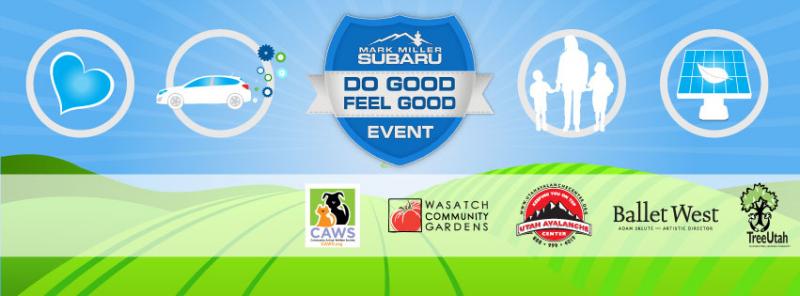| During the month of April, Mark Miller will donate $75 to the charity of your choice (5 to chose from, including the Utah Avalanche Center!) Mark Miller Subaru has raised over $300k in the previous 6 Do Good Feel Good events. More Info here |  |

For every car Mark MIller Subaru sells in April, they will donate $75 to the charity of your choice (5 to choose from). Who are you going to choose? Plus - you can vote for your favorite and the 3 groups receiving the most votes get an additional cash prize donated by Mark Miller Subaru. Details here

| During the month of April, Mark Miller will donate $75 to the charity of your choice (5 to chose from, including the Utah Avalanche Center!) Mark Miller Subaru has raised over $300k in the previous 6 Do Good Feel Good events. More Info here |  |
| Advisory: Ogden Area Mountains | Issued by Bruce Tremper for Wednesday - April 1, 2015 - 9:16am |
|---|
 |
special announcement No, this is not an April Fools Day joke. When I look out my window at the skimpy snow left in the mountains and see green grass and leaves on the tree in my yard I'm convinced it's mid May. Then I look at my calendar and I think someone is messing with me. But sadly not. Thus, we have quit issuing avalanche advisories for the season--a full month earlier than normal. I will, however, continue to post your observations each day as long as they keep coming in, so if you're getting out, you can let everyone in our community know what you find and I will do the same. Also if we get especially dangerous conditions from a spring storm or a rapid thaw, I may issue an avalanche warning through the National Weather Service. This does not mean the end of avalanches. Spring storms and warm temperatures may make avalanche danger rise. If you scroll down, I provided some general avalanche advice to follow for typical spring weather patterns and I provide a series of other links you can use for current conditions and mountain weather. First, I have a long list of people to thank:
|
 |
current conditions Visit the Snow Page to see all the automated weather stations and web cams in the mountainous areas of Utah. Also, I will continue to post Observations each day, so please share what you find with everyone else in our mountain community. You can submit an observation by clicking HERE or fill out the form from our home page. |
 |
weather Here are my favorite links for mountain weather: The good-old National Weather Service forecast is, hands-down, the best forecast you can find. For instance, HERE is one for Alta and you can go to the map and click on any region of Utah to create a customized forecast for that 1-mile square area. While you're on the page, you can click on the satellite loop, the radar loop or--my favorite-- the graphic display of hourly weather for that area. A couple other more geeky links I like include: For maps, I like the Penn State display of various maps. |
| general announcements Remember your information can save lives. If you see anything we should know about, please participate in the creation of our own community avalanche advisory by submitting snow and avalanche conditions. If you trigger an avalanche in the backcountry - especially if you are adjacent to a ski area – please call the following teams to alert them to the slide and whether anyone is missing or not. Rescue teams can be exposed to significant hazard when responding to avalanches, and do not want to do so when unneeded. Thanks. Benefit the Utah Avalanche Center when you shop from Backcountry.com or REI: Click this link for Backcountry.com or this link to REI, shop, and they will donate a percent of your purchase price to the UAC. Both offer free shipping (with some conditions) so this costs you nothing! Benefit the Utah Avalanche Center when you buy or sell on ebay - set the Utah Avalanche Center as a favorite non-profit in your ebay account here and click on ebay gives when you buy or sell. You can choose to have your seller fees donated to the UAC, which doesn't cost you a penny.
|
Advisory Hotline: (888) 999-4019 | Contact Information